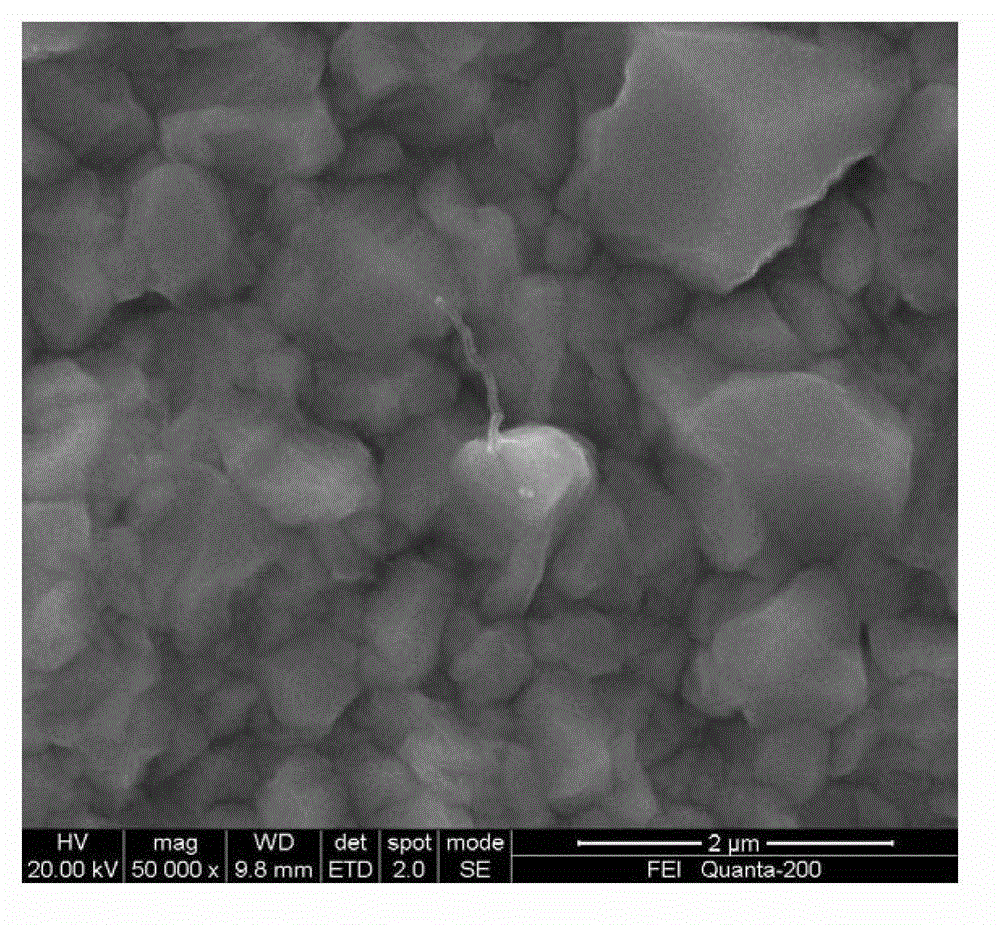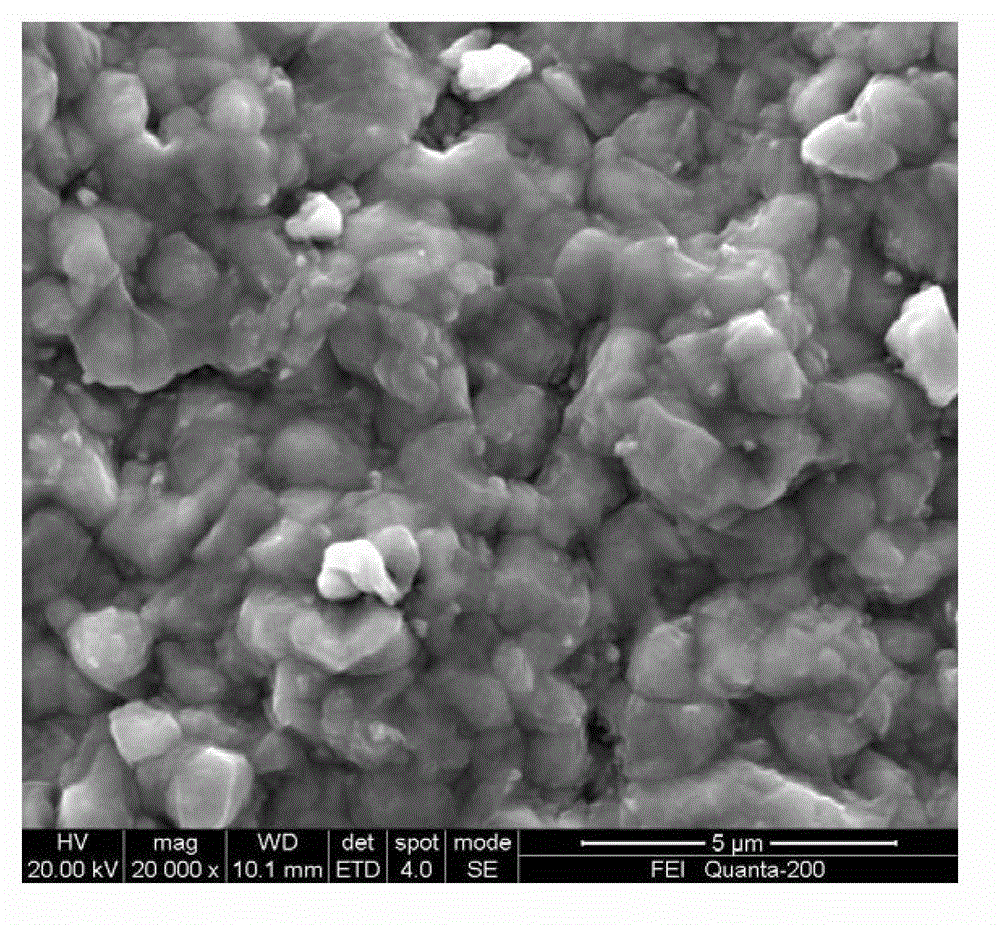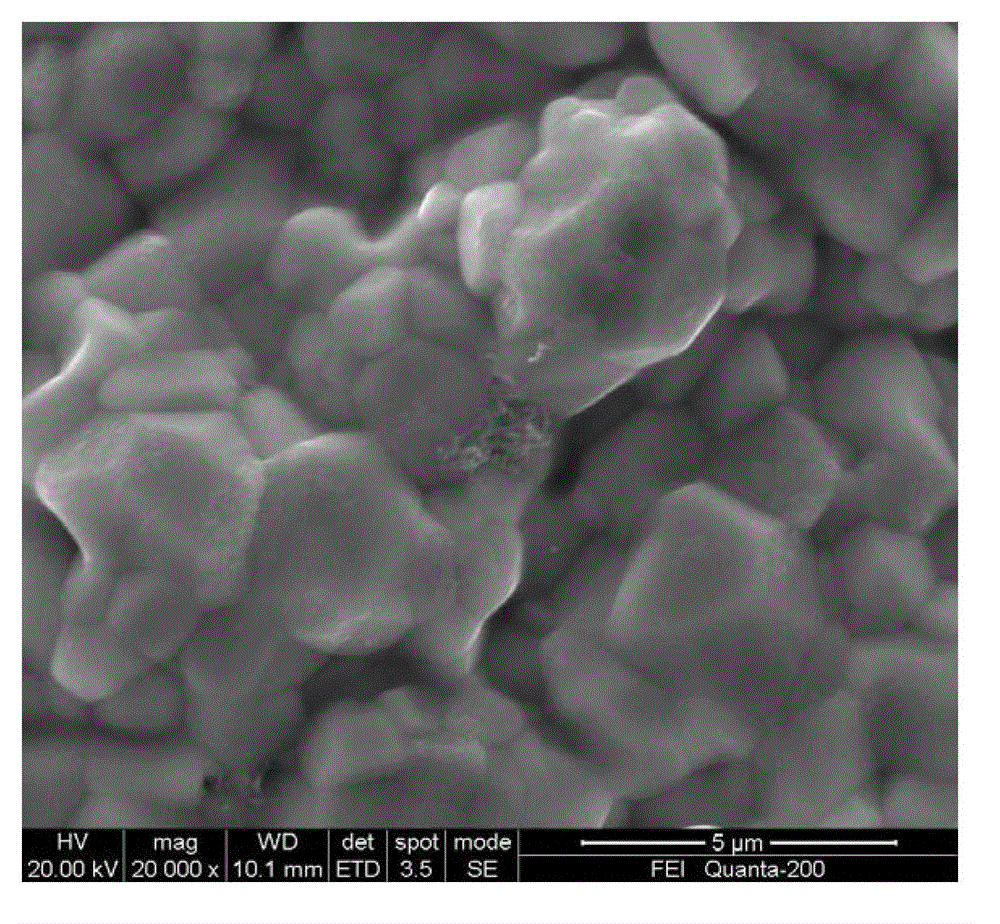Carbon-Cu6Sn5 alloy negative electrode materials and preparation method thereof
A -cu6sn5, alloy negative electrode technology, applied in the field of lithium ion battery manufacturing, can solve the problem of poor cycle performance of alloy negative electrode materials, achieve excellent cycle performance and rate charge-discharge performance, good electrical conductivity and mechanical properties, strong cycle performance Effect
- Summary
- Abstract
- Description
- Claims
- Application Information
AI Technical Summary
Problems solved by technology
Method used
Image
Examples
Embodiment 1
[0062] (1) Remove impurities and disperse the CNTs: the specifications of the selected CNTs are: the outer diameter is 20nm, and the length is 3μm;
[0063] Add the HCl solution that the mass concentration is 18.25% in the container that contains CNTs, obtain the pretreatment liquid that CNTs content is 4g / L;
[0064] The above pretreatment solution was ultrasonically oscillated while mechanically stirring for 3 hours, then magnetically stirred for 24 hours, then the CNTs were separated from the pretreatment solution, and finally the CNTs were dried for 24 hours;
[0065] (2) Copper foil is used as the substrate (current collector), and the Cu-CNTs coating is plated by DC electroplating, with a thickness of 4 μm;
[0066] The formulation and conditions of electroplating Cu-CNTs composite coating are as follows:
[0067] Copper pyrophosphate 70g / L;
[0068] Potassium pyrophosphate 320g / L;
Embodiment 2
[0088] All the other steps are identical with embodiment (1). A 2 μm tin-graphene alloy coating was electroplated on the copper foil coated with CNTs-Cu by composite electroplating, and finally heat-treated at 200°C for 10 hours to obtain carbon-Cu 6 sn 5 Alloy anode materials. Using the conventional lithium-ion battery test method, the first discharge mass specific capacity of the negative electrode effective material is 587mAh / g. After 100 charging cycles, the specific capacity is still 563.5mAh / g. The specific capacity decays only 4%, and the Coulombic efficiency exceeds 96. %.
Embodiment 3
[0090] The remaining steps are the same as in embodiment (1). A 2 μm tin-CNTs-graphene coating was electroplated on the copper foil coated with CNTs-Cu by composite electroplating, and finally heat-treated at 200°C for 10 hours to obtain carbon-Cu 6 sn 5 Alloy anode materials. Using conventional lithium-ion battery test methods, the first discharge mass specific capacity of the negative electrode effective material is 607mAh / g. After 100 charging cycles, the specific capacity is still 588.8mAh / g. The specific capacity decays only 3%, and the Coulombic efficiency exceeds 97. %.
PUM
| Property | Measurement | Unit |
|---|---|---|
| length | aaaaa | aaaaa |
| thickness | aaaaa | aaaaa |
| thickness | aaaaa | aaaaa |
Abstract
Description
Claims
Application Information
 Login to View More
Login to View More - R&D
- Intellectual Property
- Life Sciences
- Materials
- Tech Scout
- Unparalleled Data Quality
- Higher Quality Content
- 60% Fewer Hallucinations
Browse by: Latest US Patents, China's latest patents, Technical Efficacy Thesaurus, Application Domain, Technology Topic, Popular Technical Reports.
© 2025 PatSnap. All rights reserved.Legal|Privacy policy|Modern Slavery Act Transparency Statement|Sitemap|About US| Contact US: help@patsnap.com



